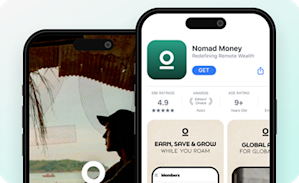Communities & Memberships
Kajabi vs. ClickFunnels
In this article, we’ll compare Kajabi and ClickFunnels to help determine which is best for your needs.
Author
Mighty Team
Last Updated
February 6, 2025

Table of Contents
Kajabi and ClickFunnels both have high name recognition among digital entrepreneurs. And both have powerful funnel and marketing tools for creating and selling digital products. Because they both have some of the same features–funnels, email, marketing tools, course hosting, etc.--it can be challenging to know which is right for you.
In this article, we’ll cover:
What Kajabi and ClickFunnels are
The main value proposition of each
How to decide which is right for you
What is Kajabi?
Kajabi was launched in 2010 as an online course and marketing platform. Kenny Reuter built it after trying to sell a lawn sprinkler he invented and realizing he couldn’t find a sales platform he liked. The result was an online course platform that gives course creators the tools to build and sell–and it’s become a mainstay of the creator economy.

The platform brings together a learning management system with authoring software that makes running an e-learning business easy. And Kajabi brings together marketing tools too, with features like pre-made funnels for selling specific digital products. Mix in an email tool for managing prospects and nurturing customers and you’ve got a really solid digital course platform.
In 2023, Kajabi also launched Kajabi 2.0, with an improved community platform and some live meeting and teaching options–although it exists on a separate app. In 2023, Kajabi announced that it was responsible for $5 billion in creator earnings.
Pros of Kajabi
Comprehensive course platform
Marketing funnels built-in
Integrated emails and page building
Cons of Kajabi
Integrated emails and page building
Expensive
Works best for asynchronous courses
Separate course delivery and live engagement platforms
What is ClickFunnels?
Unlike Kajabi, ClickFunnels is a marketing platform first. It was created by Russel Brunson as the tool to make conversions and sales easy with online businesses. A funnel is a marketing process that takes potential customers through a value ladder until a percentage of them convert and buy. ClickFunnels was built to make this process of online sales easier.
It comes with a bunch of pre-made funnels for selling almost anything. You choose the funnel template, for example, a course sales funnel or a membership funnel. The processes are in place already and learning how to use ClickFunnels is straightforward. You just add your specific information for your product or service and voila, ClickFunnels can sell it and host the landing page. ClickFunnels also has an email function to nurture prospective customers.
In 2022, ClickFunnels released a ton of new features, moving beyond just funnel building and adding in page hosting, full website creation, and online courses. This update brings it into line with Kajabi.
Pros of ClickFunnels
Tons of funnels to choose from
Email and page-building included
Easy to set up
Advanced marketing features and automations
Cons of ClickFunnels
Course builder isn’t great
Poor app coverage
How are they the same?
Both Kajabi and ClickFunnels include sales and marketing tools, including pre-made funnels and email marketing software. Here are some of the other points of overlap (we’ll cover these more in-depth below).
Easy-to-build landing pages with templates to choose from.
Premade sales funnels for different types of digital businesses.
Hosting for different kinds of websites and landing pages
Check-out functions and other useful digital business tools.

How are they different?
You can spot the difference between ClickFunnels vs. Kajabi by reading their origin stories above.
Basically, ClickFunnels started as a funnel marketing platform and built in other features later. Kajabi started as a course platform with built-in marketing features.
Each platform excels at what they were created for:
Kajabi is a really good course platform with decent marketing tools.
ClickFunnels is a really good funnel-builder with a not-great course platform.
We’ll go further into detail below.
ClickFunnels vs. Kajabi: The comparison
1. The funnels
ClickFunnels
When it comes to funnels, there’s a reason Russel Brunson has the reputation he does. ClickFunnels gives you a ton of different funnels to choose from–each are tested templates. Then, sort of like a webpage builder, you customize the funnel to meet your needs. You’re not limited to the template, you can add pages and features if you like. And you’re building funnels that look and feel like your own brand.
The templates aren’t just visual. They’re designed for both UX and marketing success, giving you the power of a seasoned marketing team behind you.
You can connect payments to the funnels, as well as link a ton of other integrations like Shopify, GoToWebinar, ConvertKit, Hubspot, and MailChimp.
Kajabi
Kajabi’s funnels work on a similar philosophy to ClickFunnels’. They’re designed and ready to go, and you choose a template and plug in your info. Like ClickFunnels’ templates, Kajabi claims that their templates are expert-tested and specifically optimized for use cases.
You can choose your specific funnel need as you begin.

Once you pick your funnel, Kajabi feels a lot like ClickFunnels. You can choose integration, customize the funnel to fit your brand, integrate with other software like Stripe or Paypal, and connect to email and landing pages.
Which is best?
There’s no clear winner here. Both Kajabi and ClickFunnels have similar funnel options. ClickFunnels has more funnels–it offers 100 while Kajabi offers 6. But this may not matter to you if Kajabi still works for your use case.
Really, the best way to decide is probably what you can sell, and that’s where we’ll go next.
2. The products
The choice between ClickFunnels vs. Kajabi will probably happen here. That’s because each of them works best for a certain type of digital product.
Kajabi
Best for selling courses
Kajabi is the best tool of the two for selling courses. There’s no comparison. While ClickFunnels excels in general, the course platform is the weakest point. It’s basically a video or content library with almost no organization.
By comparison, Kajabi is one of the best course platforms on the market–especially when it comes to pre-recorded, asynchronous courses. It offers evaluations, lesson tracking, content dropping, and grades. You can build and customize course pages or work from templates. And you can add content in almost any medium.
Kajabi’s weakness in courses is its lack of features for teaching live cohort courses. They acquired Vibely to add some more community and video calling functions, but it’s on a separate platform with a separate app.
However, there’s no question Kajabi is the better option for course-related teaching; this could apply to coaching programs too–which have a lot in common with online courses.
And while Kajabi has its issues for live and membership-related products, it’s probably still the better of the two. ClickFunnels’ membership platform is really basic–it’s just a gated content and paywall.
But if you’re building a membership or community, neither of these two are the best option. You can see our rankings of membership platforms here.

ClickFunnels
Best for selling everything else
ClickFunnels is best for all the other stuff. The stuff that’s not courses. This could mean selling an e-commerce product, a book, or collecting leads for a service-based business. These are the things ClickFunnels does better than Kajabi, because Kajabi isn’t really about building these kinds of funnels.
So if you’re selling something that’s not a course, ClickFunnels is probably the better choice. Since they have a ton of funnels to choose from for every use case, it’s easier to find the right funnel for a certain product.
Should you integrate ClickFunnels with Kajabi?
As a follow-up question, you might be thinking, “What if I just integrate ClickFunnels and Kajabi?”
This probably wouldn’t make sense for most people. If you’re building a product that needs to be hosted on Kajabi–aka a course–you’d be better off just using Kajabi’s funnels. There’s not a huge difference and everything will be in one place. The extra you pay for ClickFunnels might not be worth it–Kajabi is already expensive enough.
3. The marketing suite
Next, let’s talk about the suite of tools both Kajabi and ClickFunnels give you. Both brands have leaned into the website and landing page builders as core components of their offerings.
Both platforms can be used to build websites and landing pages. They are both easy and intuitive and let you choose from different types of pages, including homepages as well as blog posts. As we said above, with Kajabi this extends to customizing your course pages, while ClickFunnels’ courses are more limited in design. But both have a lot of page templates to choose from and it’s easy to create the visual integrations for your website.
Both platforms also have email. Kajabi’s email software lets users send emails directly from their Kajabi account–potentially replacing a third-party email software. Kajabi’s email features are tied into its all-in-one approach, and the email can be integrated with other parts of the funnels and course delivery. It has a multi-touch delivery with premade sequences and lots of templates to choose from.
By contrast, ClickFunnels’ email software is more closely connected to its funnel feature and isn’t a product-related email tool. But it has powerful features too, like an autoresponder, pre-designed email templates, and marketing features like cart recovery. You can segment users based on past sales or segments.
Which is best?
Both Kajabi and ClickFunnels have good (not great) website builders that give you everything you need to create a basic product or brand website to support sales. Neither are as good as an actual website builder, but Kajabi has the better site builder of the two. Kajabi also has the edge on email tools, although it’s a close race–it gives you more functionality. Ultimately both platforms have good email software with lots of useful marketing functions like sequences, automations, and segmentation.
However, ClickFunnels does a better job of integrating advanced marketing features, and they’re still adding new tested features all the time: things like countdown funnels, store funnels, and smart checkouts.
4. The integrations
Of the two, ClickFunnels has way more integrations built in. Kajabi only has 15, although you can add more with Zapier.
ClickFunnels Integrations
Actionetics, MailChimp, Twilio, Shopify, ActiveCampaign, AWeber, Constant Contact, ConvertKit, Drip, EverWebinar, Facebook, GetResponse, GoToWebinar, HubSpot, Infusionsoft, Kajabi, Mad Mimi, Market Hero, Maropost, PushCrew, SalesForce, Sendlane, ShipStation, SlyBroadcast, WebinarJam Studio, Zapier, ZenDirect, Zoom, Apple/Android Pay, Authorize.net, Bluesnap, ClickBank, EasyPayDirect, JV Zoo, Keap, NMI (Gateway Funnel Pros), PayPal, Recurly, Stripe, Warrior Plus
Kajabi Integrations
Creator.io, Zapier, MailChimp, Segment, Stripe, Meta Pixel, Google Analytics, ConvertKit, Drip, PayPal, ActiveCampaign, Aweber, Google Tag Manager
5. The apps
ClickFunnels has a stats app for iOS and Android, but it’s poorly rated. While ClickFunnels creates mobile-friendly products and funnels, it’s not really meant for creating and using an app to run your online business.

By comparison, Kajabi does have apps that you can use to manage your business, but also to create content. This makes it a much better alternative for creators who rely on mobile-first building.
However, Kajabai’s main features for memberships and community are actually on a separate app. That means that to run a course and community together–your members need to download two different apps. Remember, Kajabi is a great asynchronous course engine–but its weaknesses are with the live course and community functions.

Conclusion
At the end of the day, Kajabi vs. ClickFunnels really comes down to what you’re trying to build.
Building marketing funnels into pre-recorded course sales? Use Kajabi.
Building complex funnels for selling anything other than a course? ClickFunnels is probably the better option. There are more funnels to choose from, more specialized testing and use-cases, and more integrations.
Want another option?
For building membership sites, communities, and courses, come build on Mighty! Mighty is one of the top platforms to sell digital products. Through the power of community flywheels, a community platform tips the funnel logic on its head. By using the community flywheel, you can put product sales on autopilot–growing through your existing audience.
If you want a platform that brings courses and community together, come build on Mighty! We’re ranked G2’s #1 community management software. You can try it free!
Ready to start building your community?
Start a free 14-day trial to explore Mighty—no credit card required.
More like this
Join Mighty Community
Learn the principles of Community Design™ (and see them in action) alongside thousands of creators and entrepreneurs. It's free to join!

Online Courses
Creating a Course
Teaching a Course
Course Platforms
Selling a Course
Communities & Memberships
Community Platforms
Managing a Community
Building a Community
Growing a Community
Monetizing a Community
Content Creation
Creators & Entrepreneurs
Monetization
Content Creation
Starting a Business
Website Builders
Creating & Managing a Website
Events
Event Platforms
Hosting & Marketing Events
Branded Apps
Creating a Mobile App
Coaching Apps
Community Apps
Coaching
Mastermind Groups
Starting a Coaching Business
Coaching Platforms
Filter by Category
Online Courses
Communities & Memberships
Creators & Entrepreneurs
Events
Branded Apps
Coaching
Build a $1 Million Community
This free masterclass went viral—sign up to learn why.

























